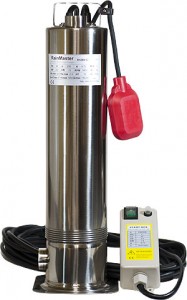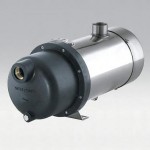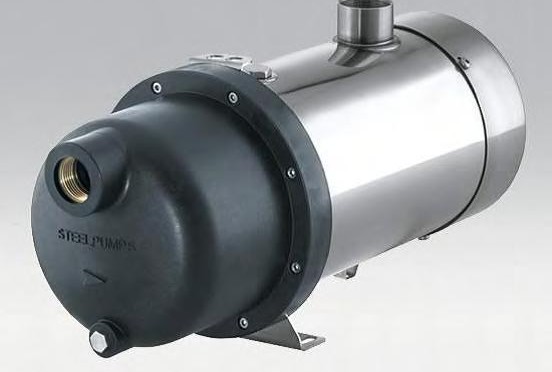This is Part 7 in the series “How to Build a Rainwater Collection System”. Click to see parts one, two, three, four, five and six.
 Either a submersible pump or centrifugal pressure pump will be required to transfer water from storage to filtration and use. A submersible pump will need means of regulating flow.
Either a submersible pump or centrifugal pressure pump will be required to transfer water from storage to filtration and use. A submersible pump will need means of regulating flow.
A pressure tank with a pressure switch will tell the pump when to turn on and off by a drop of pressure in the pressure tank. This application is much like well system and is intended for household use. It could be used for irrigation, but keep in mind that the pressure tank will need to be frost protected.
 The most common method of conveyance would be a booster pump. These pumps are generally centrifugal pumps and can be placed in the mechanical room or well shed. A centrifugal booster pump is used without an exterior pressure tank and is considered an “on demand” pump, meaning that when the faucet is opened, the pressure in the pump drops down to low pressure – usually 20 PSI, and the pump will start running and maintain constant pressure while the faucet is open. Once the faucet is closed, the pump will continue to run until it meets its high pressure cut off.
The most common method of conveyance would be a booster pump. These pumps are generally centrifugal pumps and can be placed in the mechanical room or well shed. A centrifugal booster pump is used without an exterior pressure tank and is considered an “on demand” pump, meaning that when the faucet is opened, the pressure in the pump drops down to low pressure – usually 20 PSI, and the pump will start running and maintain constant pressure while the faucet is open. Once the faucet is closed, the pump will continue to run until it meets its high pressure cut off.
Either pump system should always be used before filtration and disinfection — which will be our next topic.
Don’t forget to check the box below in order to receive an email notification when blog posts are launched.


3 thoughts on “What Kind of Pump is Used to Transfer Water Stored in Rainwater Collection?”
Comments are closed.